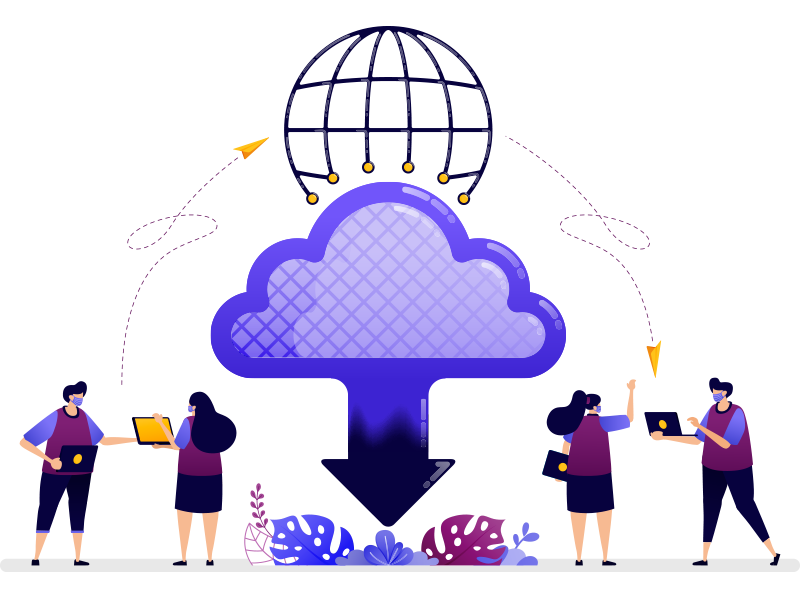Top 2024 SaaS Trends Transforming HRMS
As organizations continue to prioritize efficiency, employee experience, and agility, the need for advanced HR management systems (HRMS) has grown exponentially. In 2024, Software as a Service (SaaS) trends are not only driving innovation but also fundamentally transforming how HR departments operate. Let’s explore the top SaaS trends shaping HRMS in 2024 and how these innovations are helping businesses create stronger, more adaptable workforces.

![]() 1. User-Friendly Interface & Seamless Integration
1. User-Friendly Interface & Seamless Integration
Artificial Intelligence (AI) is no longer just an emerging technology; it’s a game-changer in the HRMS space. AI-driven solutions streamline hiring by analyzing candidate resumes, assessing soft skills, and matching potential hires with job requirements. Automated screening, scheduling, and even initial interview stages allow HR teams to focus on engaging high-potential candidates.
![]() 2. Increased Focus on Employee Experience Platforms (EXP)
2. Increased Focus on Employee Experience Platforms (EXP)
Employee Experience Platforms (EXP) are taking center stage in HRMS, focusing on the holistic employee journey from onboarding to career development. This year, companies are leveraging SaaS-based HRMS platforms that offer tailored experiences for employees, such as personalized onboarding programs, skill development resources, and mental health support.
With remote and hybrid work models becoming the new norm, HRMS platforms are prioritizing tools that help employees stay connected and engaged, regardless of location. From communication hubs to wellness programs, these tools are crucial in maintaining morale and productivity in distributed teams.
![]() 3. Real-Time Data Analytics and Predictive Insights
3. Real-Time Data Analytics and Predictive Insights
In 2024, HRMS solutions are equipped with robust analytics capabilities, allowing HR teams to make data-driven decisions with real-time insights. Predictive analytics uses data to foresee trends in employee turnover, engagement levels, and recruitment outcomes, enabling HR leaders to take proactive measures.
From tracking employee sentiment to forecasting workforce needs, predictive analytics in SaaS-based HRMS systems helps companies stay ahead of potential challenges. With actionable insights, organizations can create better policies, improve work environments, and ultimately make informed decisions that align with business goals.
![]() 4. Advanced Automation for Repetitive HR Tasks
4. Advanced Automation for Repetitive HR Tasks
Automation continues to be a driving force in the HRMS landscape. In 2024, more SaaS HRMS systems offer advanced automation for routine tasks like payroll processing, leave management, and compliance reporting. This not only reduces administrative burden but also ensures accuracy and compliance with evolving regulations.
By automating repetitive tasks, HR teams can devote more time to strategic initiatives, such as employee engagement, leadership development, and talent planning. SaaS providers are now enhancing automation features, allowing HR departments to scale their operations with minimal manual intervention, thus boosting efficiency and freeing up resources.
![]() 5. Enhanced Compliance Management and Data Security
5. Enhanced Compliance Management and Data Security
With the rise in data privacy regulations worldwide, HRMS solutions are focusing heavily on compliance and data security. In 2024, SaaS-based HRMS platforms are enhancing data encryption, multi-factor authentication, and compliance tracking to protect sensitive employee information and comply with regulatory requirements.
For HR teams, this means less time worrying about data security and more time focusing on strategic goals. Advanced compliance tools in HRMS platforms can track regulatory changes in real time, helping companies avoid penalties and maintain transparency. With the added layers of security, businesses can foster trust with employees, knowing that their data is protected.
![]() 6. Mobile-Optimized HRMS for On-the-Go Access
6. Mobile-Optimized HRMS for On-the-Go Access
As mobile device usage continues to soar, mobile-optimized HRMS solutions are becoming essential. In 2024, mobile-first HRMS systems enable employees and managers to access HR functions from anywhere, making it easier to handle requests, view payslips, and apply for leave on the go.
With mobile-friendly interfaces, SaaS HRMS platforms improve accessibility and foster a more agile workforce. This flexibility is especially beneficial in today’s work-from-anywhere culture, where employees appreciate the convenience of handling HR tasks from their phones, no matter where they are.
![]() 7. Integration with Broader Ecosystems
7. Integration with Broader Ecosystems
Today’s HRMS solutions are no longer standalone applications; they are part of a larger ecosystem of business applications. In 2024, SaaS-based HRMS platforms prioritize seamless integration with other enterprise tools, such as CRM, ERP, and collaboration software, creating a unified platform for all critical data and workflows.
This integration simplifies data sharing, reduces duplicate entries, and provides a holistic view of business operations. By aligning HR with other functions like finance and operations, companies gain better insights into workforce performance and can adapt HR strategies to match overall business objectives.
![]() 8. Focus on Learning and Development (L&D) Tools
8. Focus on Learning and Development (L&D) Tools
Employee growth is a top priority for organizations, and HRMS solutions are evolving to meet this demand by incorporating powerful learning and development (L&D) modules. In 2024, SaaS-based HRMS platforms offer built-in L&D features that allow employees to enroll in courses, track their progress, and gain new skills aligned with organizational needs.
SaaS HRMS platforms are also leveraging AI to personalize learning experiences, recommending courses based on individual career paths and performance. These tools create a culture of continuous learning, empowering employees to stay relevant and motivated in their roles.